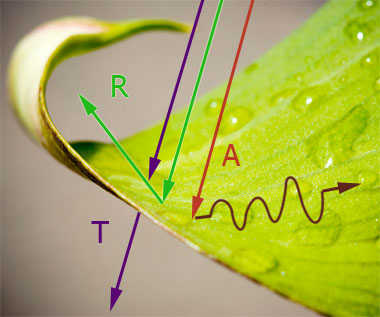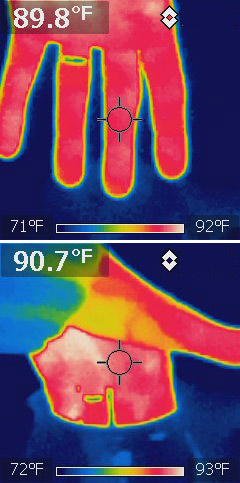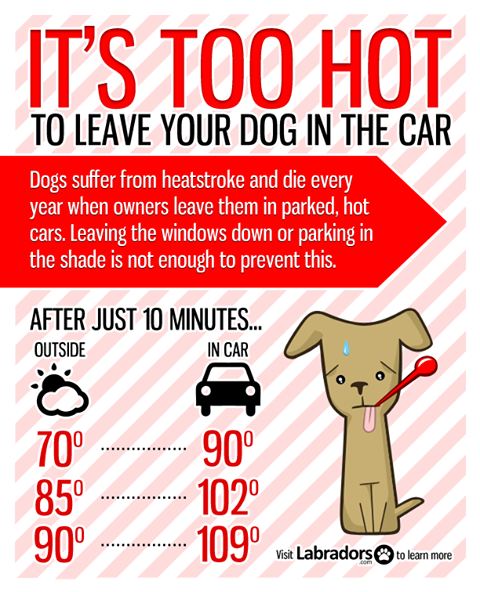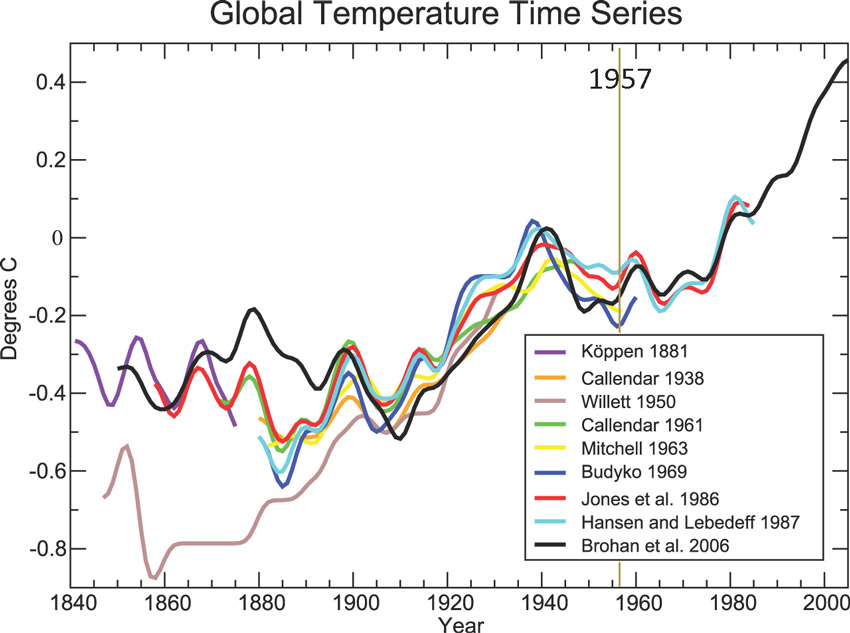Greenhouse effect / IPCC
When light strikes "stuff"
 Three kinds of things can happen when light strikes something, depending on the wavelength of the light and the material:
Three kinds of things can happen when light strikes something, depending on the wavelength of the light and the material:
- Transmission,
- Reflection (scattering) or
- Absorption
- Visible light from the sun is transmitted through the atmosphere (including the GHGs):
- The visible light strikes Earth's surface where it is absorbed by land/roads/trees (friction): These objects heat up.
- Hot objects give off infrared (IR) radiation.
- But GHGs reflect and absorb IR radiation; They are not as transparent to IR light. [ IR=infrared: Light with a wavelength much longer than visible red light. ]
- Permafrost.
- Look at number of high-temp records set vs low-temp records set. What would you expect if there is no global warming? If there is global warming?
Earth's atmosphere also transmits, reflects, and absorbs some of the light from the sun.
Global warming
Carbon dioxide, water vapor,  methane,
CFC's and other gases are 'greenhouse' gases.
methane,
CFC's and other gases are 'greenhouse' gases.
So some energy from the sun remains trapped in the atmosphere, which heats up the atmosphere.
 Substitute "car windows" for "GHGs" in the description above, and you have an explanation for why the inside of your car on a sunny day is hotter than
the surroundings.
Substitute "car windows" for "GHGs" in the description above, and you have an explanation for why the inside of your car on a sunny day is hotter than
the surroundings.
Thanks to the natural greenhouse effect the surface of earth has an average temperature of about 14 C (~60 F).
Without this, (Oxygen and nitrogen but no GHGs) it is estimated the average temperature would drop to -18 C (~ 0 F).
History of temperature
Has there been a rise in temperatures since the 1950's corresponding to the rise in $CO_2$?

This is global average temperature.
It's difficult to pick out the change in average temperatures because of all the daily / yearly / geographic variation in temperature. But some measurements that make it easier to detect long-term changes: